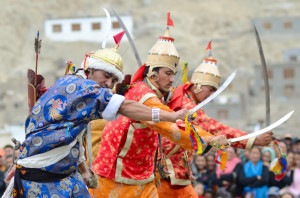The Choreometrics Project, developed by Alan Lomax, Irmgard Bartenieff, and Forrestine Paulay, provides a provocative hypothesis regarding the relationship between tools, work movement, and dance.
Taking a cross-cultural perspective, the project studied dance and work movement as formalized, culturally conditioned behavior, drawing on hundreds of filmed examples from pre-industrial societies. They found that dance mirrors the movements necessary to carry out recurrent work tasks. Moreover, the Choreometrics team found the shape and dimensionality of the dance movement to be associated with the types of tools traditionally employed in working. I summarized their findings in Beyond Words in the following way.
“As cultures advanced up the technological scale from stick-and-stone to metallurgy and to advanced agricultural economies, the movement behaviors in both work and dance became increasingly more elaborate and complex. For example, in a stick-and-stone culture, one-dimensional linear spatial pathways predominate, supposedly because the use of more circular or twisted paths would be like to break the fragile stick or bone implements. Once further advances brought metal into life, however, arc-like two-dimensional pathways gained dominance, presumably because metal can stand, without breaking, the twist and torque inherent in this manner of use. Finally, more complex three-dimensional looping and spiraling movements came to be found in the high agricultural societies, such as those of the Far East, which utilize irrigation and terracing to restructure the environment.”

Thus the Choreometrics research suggests that technological development in material extensions, such as tools, can be correlated with elaborations in movement behavior, both in working movements and in the traditional folk dances of a pre-industrial society. This relationship between material and non-material extensions systems gives some credence to Karl Marx’s observation that “the mode of production in material life determines the general character of the social, political and spiritual processes of life.”
Of course, Marx made these observations in relation to industrialized societies, which exceeded the scope of the formal Choreometrics study. Can a similar elaboration of movement behavior be found in this context?
